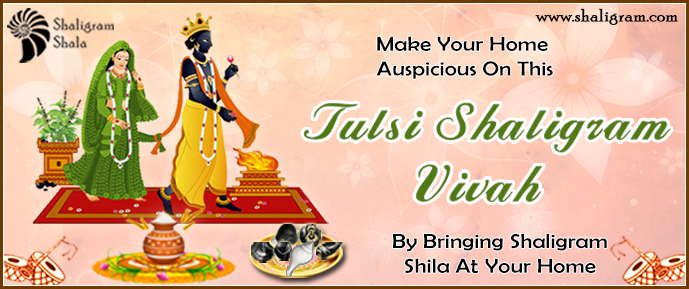 |
 Tulsi Vivah Tulsi Vivah 
Tulsi Vivah is the ceremonial marriage of the Tulsi plant (holy basil) to the Hindu god Vishnu in the form of Salagram Shila. This ceremony can be performed any time between Prabodhini Ekadashi - the eleventh lunar day of the bright fortnight of the Hindu month Kartik to the full moon of the month Kartik Poornima but usually it is performed on the eleventh or the twelfth lunar day. The day varies from region to region. The Tulsi wedding signifies the end of the monsoon and the beginning of the Hindu wedding season. Tulsi is venerated as a goddess in Hinduism and considered a wife of god Vishnu in the form of Salagram Shila. She is often called as Vishnupriya, the beloved of Vishnu. The legend behind Tulsi Vivah and its rites are told in the scripture Padma Purana.
According to Hindu mythology the Tulsi plant was a woman named Vrinda (Brinda), a synonym of Tulsi. She was married to the demon-king Jalandhar. Due to her piety and devotion to Vishnu, her husband became invincible. Even god Shiva the destroyer in the Hindu Trinity could not defeat Jalandhar. So Shiva requested Vishnu - the preserver in the Trinity - to find a solution. Vishnu disguised himself as Jalandhar and violated Vrinda. Her chastity destroyed, Jalandhar was killed by Shiva. Vrinda cursed Vishnu to become black in colour and he would be separated from his wife.Thus, he was transformed into the black Shaligram stone and in his Rama avatar, his wife Sita was kidnapped by a demon-king and thus separated from him. Vrinda then burnt herself on her husband's funeral pyre or immolated herself due to the shame. The gods or Vishnu transferred her soul to a plant, henceforth which was called as Tulsi.
As per a blessing by Vishnu to marry Vrinda in her next birth, Vishnu in form of Shaligram - married Tulsi on Prabodhini Ekadashi. To commemorate this event, the ceremony of Tulsi Vivah is performed. Another minor legend narrates that Lakshmi- the chief consort of Vishnu - slew a demon on this day and remained on earth as the Tulsi plant.
 Ritual Ritual 
The marriage of Tulsi with Vishnu/Krishna resembles the traditional Hindu wedding. This ceremony is conducted at homes and also at temples. A fast is observed on the Tulsi Vivah day till evening when the ceremony begins. A mandap (marriage booth) is built around the courtyard of the house where the Tulsi plant is planted. The Tulsi plant is usually planted in centre of the courtyard in a brick plaster called Tulsi vrindavana. It is believed that the soul of Vrinda resides in the plant at night and leaves in the morning. The bride Tulsi is clothed with a sari and ornaments including earrings and necklaces. A human paper face with a bindi and nose-ring - may be attached to Tulsi. The groom is a brass image or picture of Vishnu or Krishna or sometimes Balarama or more frequently the Shaligram stone - the symbol of Vishnu. The image is clothed in a dhoti. Both Vishnu and Tulsi are bathed and decorated with flowers and garlands before the wedding. The couple is linked with a cotton thread (mala) in the ceremony.
In Maharashtra, an important ritual in the ceremony is when the white cloth is held between the bride and the groom and the priest recites the Mangal Ashtaka mantras. These mantras formally complete the wedding. Rice mixed with vermilion is showered by the attendees on Tulsi and Vishnu at the end of the recitation of the mantras with the word "Savadhan" (literally "be careful" implying "You are united now". The white curtain is also removed. The attendees clap signifying approval to the wedding. Vishnu is offered sandalwood-paste, men's clothing and the sacred thread. The bride is offered saris, turmeric, vermilion and a wedding necklace called Mangal-sutra, worn by married women. Sweets and food cooked for an actual wedding are cooked for Tulsi Vivah too. This ceremony is mostly performed by women. The prasad of sugar-cane, coconut chips, fruits and groundnut is distributed to devotees.
The expenses of the wedding are usually borne by a daughter-less couple, who act as the parents of Tulsi in the ritual wedding. The giving away of the daughter Tulsi (kanyadaan) to Krishna is considered meritorious to the couple. The bridal offerings to Tulsi are given to a Brahmin priest or female ascetics after the ceremony.
In two Rama temples in Saurashtra, the ceremony is more elaborate. An invitation card is sent to the groom's temple by the bride's temple. On Prabodhini Ekadashi, a barat bridal procession ofLalji - an image of Vishnu - sets off to the bride's temple. Lalji is placed in a palanquin and accompanied by singing and dancing devotees. The barat is welcomed on the outskirts of Tulsi's village and the ceremonial marriage is carried at the temple. At the bride's side, Tulsi is planted in an earthen pot for the ceremony. People desirous of children perform Kanyadaan from Tulsi's side acting as her parents. Bhajans are sung throughout the night and in the morning the barat of Lalji returns to their village with Tulsi.
|
|
 |
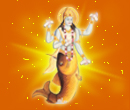 |
Matsya Avtar :
This first incarnation of Vishnu is Matsya or the Fish incarnation. In this form Vishnu saved the Saint Vaivaswata from demons. Worshipping this auspicious Shaligram brings
.... Read More |
|
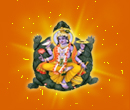 |
Kurma Avtar :
Since Kurma is a water animal it brings immense flow of wealth.Lord Vaman represents the plain portion on the back right side of the Shila, this brings peace prosperity
... Read More |
|
 |
Varaha Avtar :
This Shila is extremely powerful, auspicious and have good impressions of Laxmi, Narayan and Varaha Dev. The shape of the Shila is exactly Like a Boar or Varaha Dev.
... Read More |
|
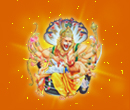 |
Narsimha Avtar :
This is one of the very rare Shaligram. The worshiper of this Shaligram gets immense protection from his opponents. Besides great protection, the worshipper also
... Read More |
|
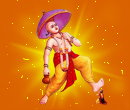 |
Vamana Avtar :
Of the ten great incarnations, the fifth one is Vaamana, and the very name indicates ‘One who has a small body’. It was in the form of a child (child student in a gurukula) that Vaamana
... Read More |
|
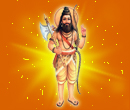 |
Parshuram Avtar :
Parasurama is the sixth incarnation of the Lord Vishnu. Prasurama killed the King Kartavirya, who had stolen the Holy cow Kamdhenu, which could fulfill all the desires. Parsurama had
... Read More |
|
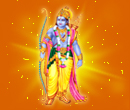 |
Rama Avtar :
Ram killed the demon Ravana who abducted Sita thereby librated the earth fro m the miseries. By worshipping Rama Shaligrama the worshipper gets immense wisdom, virtues,
... Read More |
|
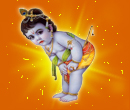 |
Krishna Avtar :
The word Krishna means in Sanskrit ‘the dark’. The Truth that is intellectually appreciated, but spiritually not apprehended, is considered as ‘veiled behind some darkness’. The root
... Read More |
|
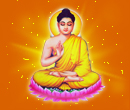 |
Buddha Avtar :
Buddha is the ninth incarnation of Lord Vishnu. Buddha though born in the rich and king’s family left his family in search of truth and wisdom. The worshipper of this Shaligrams
... Read More |
|
 |
Kalki Avtar :
Kalki is considered to be the tenth incarnation of Lord Vishnu which has yet to come in the Kalyuga. The worshipper of the Kalki Shaligram can foresee the future things happening.
... Read More |
|
 |
| For More Details Please contact to : |
 Shri. Rajeev Krishna Dasa Shri. Rajeev Krishna Dasa  |
| Address : |
306, 'C' Wing, Neelkanth Business Park,
Nathani Road, Behind Vidyavihar Railway Station, Vidyavihar(W), Mumbai- 400086, Maharashtra, (INDIA). |
| Tel No. : |
(00)-(91) 22-25109744, 9322646420/21 |
| Mobile No : |
00-91- 9322646420 / 9322646421 |
| Email Id : |
saligram8@gmail.com , shaligram8@yahoo.com |
| Web Site : |
www.shaligram.com |
|
 |
 |
| |
|
|
|
